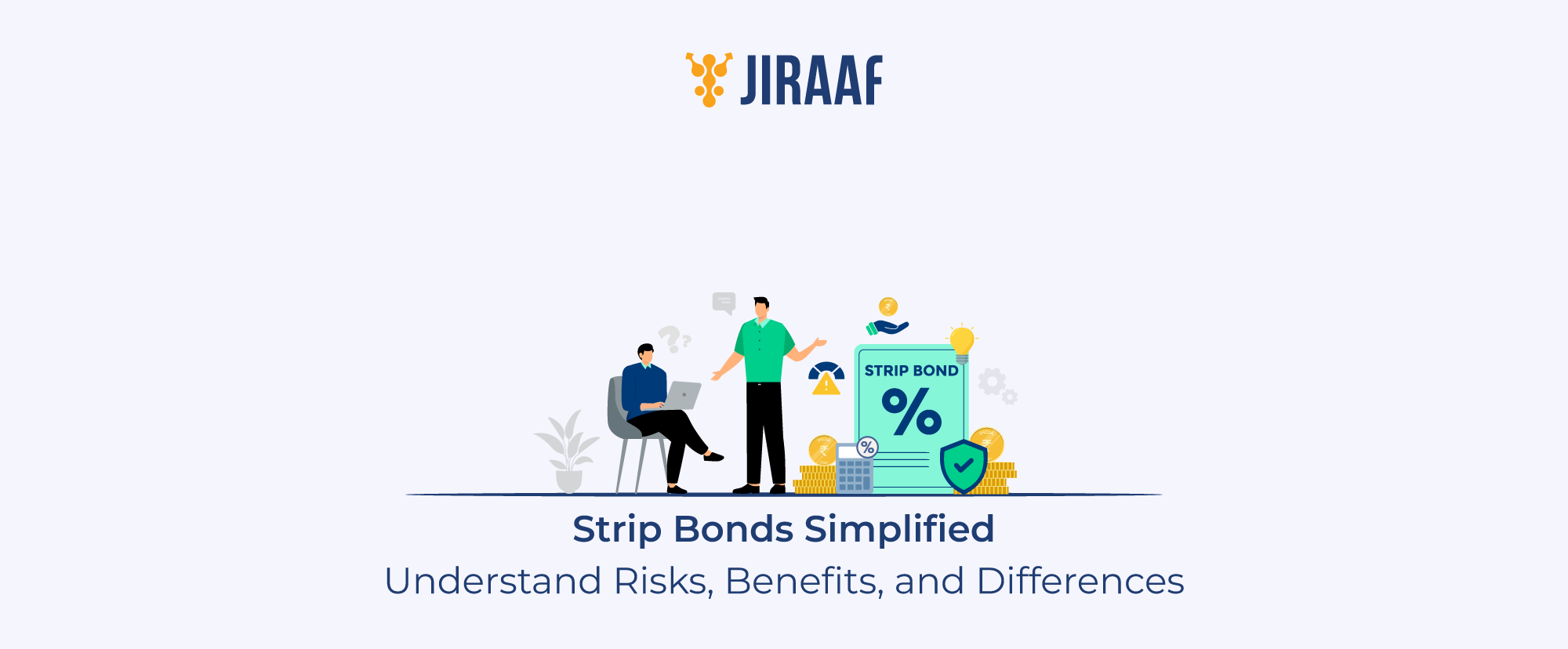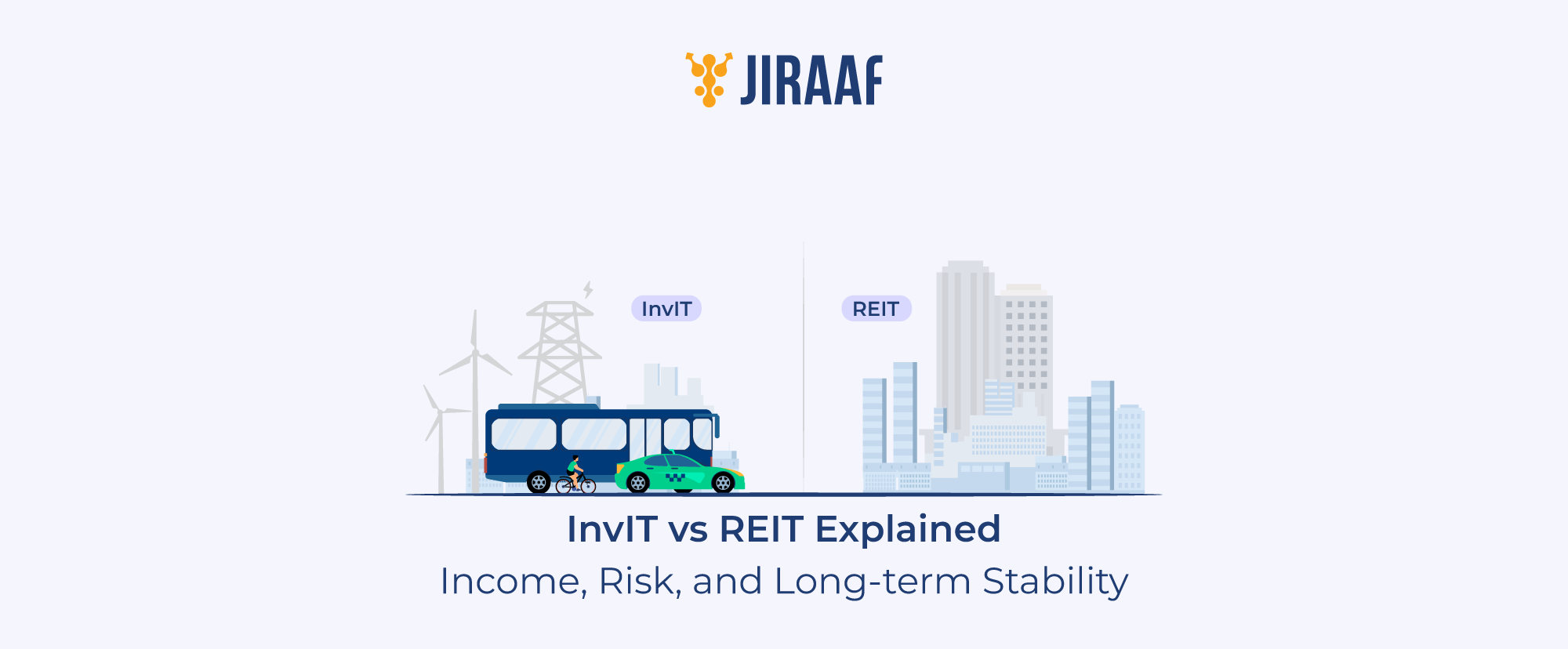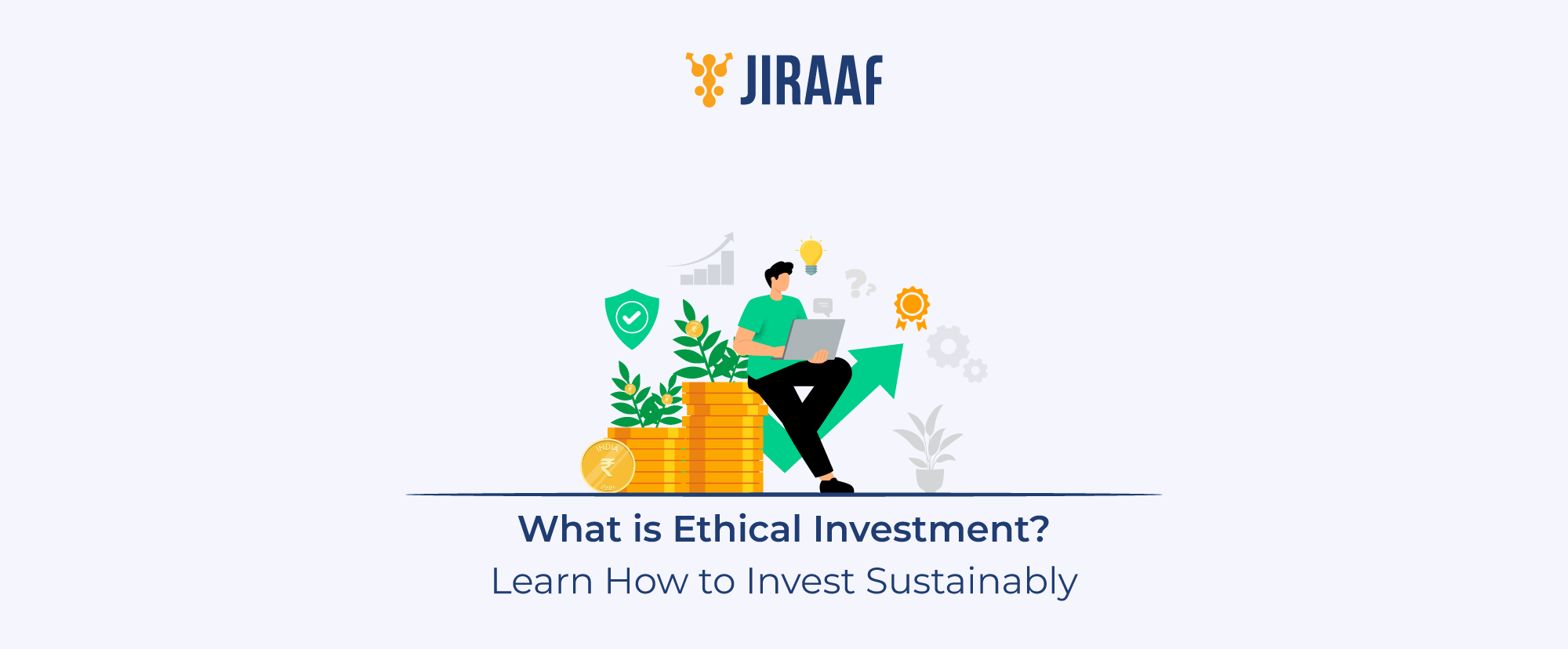Is the volatility in the equity markets keeping you awake at night? And you decided to add some fixed-income instruments to your portfolio to bring stability while generating income? But now you feel overwhelmed by the bonds universe and don’t know which investment strategy to adopt? You are not alone!
Getting lost in jargons like barbell, bullet, and ladder is easy when reading about bond investment strategies. Don’t worry, we have your back. Bonds are for every investor and there is a strategy to fit every unique goal, be it steady income, flexibility, capital growth or planning for a significant one-time expense in the future.
Let’s break down the three key bond portfolio management strategies – barbell, bullet and ladder, help you explore what they mean, so you can choose the one or a combination that can help you achieve your financial goals.
Understanding Bond Investments
Bonds are debt instruments in which the investor lends money to the issuer in exchange for regular interest payments and the promise of principal repayment on maturity. Regular interest payments provide a stable cash inflow to investors, which is why bonds are popularly known as fixed-income securities.
While bonds are a great addition to your portfolio, bond investors face credit, inflation, and interest rate risks.
Changes in the interest rates could change the value of investments.
For example, say you invest in a 10-year corporate bond pre-COVID, post, which the pandemic sets in, and India sees an interest rate hike regime. Eventually, the interest rate exceeds the coupon rate, yielding a negative real return. Additionally, you miss out on the opportunity to invest in bonds with a higher coupon rate. The opposite can also happen in an interest declining regime, but it’s a happy scenario for you as you can lock in higher coupon rates when the interest rates in the economy are declining.
You can protect your bond portfolio against interest rate risk by using simple yet effective fixed-income strategies. These strategies can help meet your financial goals by reducing risk or maximizing income while catering to your risk/return needs.
The Three Core Bond Portfolio Management Strategies
Bond investments revolve around three broad strategies: barbell, bullet, and ladder.
Let’s unpack the three core bond investment strategies so that you can choose the one that best suits your needs.
Barbell Strategy
A barbell bond portfolio management strategy involves investing in bonds of short-term (1 to 3 years) and long-term (7 to 10 years) maturity. The strategy intentionally avoids investing in medium-term bonds.
This strategy balances risk by allocating assets to low-risk short-term and high-reward long-term bonds while avoiding moderate-risk, moderate-return, medium-term bonds.
Think of this strategy as lifting a barbell with weights on both ends and nothing in the middle.
How Does The Barbell Strategy Work?
- Varying Maturity:
The barbell strategy consists of only two kinds of bonds: short-term and long-term. A long-term barbell bond portfolio with bonds held for the full term will have varying maturities.
- Ample Liquidity:
Including short-term bonds ensures liquidity for the investors, giving them enough reinvestment opportunities.
- Regular and Predictable Cash Flows
Long-term bonds ensure regular, predictable cash flows, creating a passive income stream for the investors. This will ease investors’ financial planning.
- Balances Interest Rate Risk
The combination of short-term and long-term bond allocation benefits investors from interest-rate cycles, helping them ride the rate-hike momentum. Short-term bonds lock in higher rates for long-term bonds.
The barbell bond management strategy balances risk and return. Short-term bonds reduce your interest rate risk while providing greater flexibility, and long-term bonds help you lock in high coupon rates when interest rates are decreasing.
Barbell Bond Strategy Goal
The strategy provides fixed income with ample liquidity. This can be a good bond portfolio strategy to generate passive income to supplement your primary income source.
When Should You Use The Barbell Bond Strategy?
You should use the barbell strategy when there is a wide gap between the short-term and long-term bond yields. This strategy will help you benefit from rising rates in the short term while locking in higher yields in the long term.
While barbell is a great way to generate passive income without compromising liquidity, it might not work if you are looking for goal-based bond investment strategies. Bullet strategy might fit the bill better.
Bullet Strategy
A bullet strategy involves investing in bonds maturing around the same time. This goal-based investment strategy gives you a lump sum corpus, making it ideal for planning one-time significant expenses such as education, buying a house, retirement, etc.
If you are considering a bullet strategy to fund a major expense in the coming years, you can consider noncallable bonds. Callable bonds might result in prepayment, increasing your reinvestment risk.
How Does The Bullet Strategy Work?
- Targeted maturity
- The basis of the bullet strategy is to select bonds with similar maturities, often coinciding with your future need for lump-sum cash, such as for buying or renovating a house, or funding education, etc.
- Regular, predictable cash inflows
- The cash flows are predictable, as interest rates and disbursal schedules are fixed, making financial planning and interest reinvestment easy.
- Noncallable Bonds
- A bullet bond portfolio will include noncallable bonds, as the idea is to hold them until maturity, while the issuer can redeem callable bonds before the maturity date.
- Interest rate risk
- You will hold all the bonds to maturity, mitigating interest rate risk as these bonds are immune to interest rate fluctuations to some extent.
Bullet Bond Strategy Goal
The bullet strategy works towards capital preservation and predictability by providing a fixed corpus for one-off capital expenses, such as real estate investments, education, bubble loan repayment, etc. The bond investments might also provide regular cash flows, but that is a by-product and not an objective of the strategy.
When Should You Use The Bullet Bond Strategy?
You should use a bullet strategy to fund one-off, high-priority, non-negotiable expenses. A Bullet portfolio will include bonds with similar maturities, meaning they will all be up for redemption around the same time as your lump sum cash requirement, giving you an assured cash corpus.
While a bullet portfolio is ideal for capital expenses, it will not work for you if you are looking for a balanced strategy to generate regular income during your retirement or a career break. A laddering strategy might suit you best. Read on to learn more about it and how you can replicate it.
Laddering Strategy
Laddering is a bond investment strategy that involves building a portfolio of bonds with staggered maturity. The portfolio will include bonds with different maturities, like steps on a ladder. The maturities will cover short, medium, and long-term bonds.
You can reinvest the maturity proceeds into new fixed-income securities, effectively continuing the ladder to maintain your stream of steady, predictable cash inflows.
The bond ladder can be built using fixed-income instruments such as government bonds, investment-grade corporate bonds, municipal bonds, etc. A good diversification strategy would be to add a mix of bond types for all maturities.
How Does The Laddering Strategy Work?
- Diverse Maturities
- A bond ladder includes diverse maturities, such as 1, 2, 3, 5, 7, and 10 years. This divides the interest rate risk while providing reinvestment opportunities as the bonds mature.
- Income Stream
- The portfolio’s staggered nature ensures that some of your investments mature regularly, giving you the room to plan lump-sum expenses and offering the opportunity to invest at better rates in case of rate hikes.
- Reduced Risk:
- Spreading your investments over bonds of different maturities allows you to balance the risk-return ratio while reducing interest rate risk.
- Liquidity:
- The bond ladder strategy gives you the best liquidity balance and locks in higher interest rates for the long term. The maturity proceeds can be reinvested or used to fund expenses.
When Should You Use the Laddering Bond Strategy?
The laddering strategy can be used to manage interest rate risk while also seeking regular income and liquidity. While the barbell and bullet strategy serve a specific purpose, such as managing interest rate risk or planning for an upcoming expense, laddering is a comprehensive strategy that will give you the best of both worlds while taking away the pressure to time the market and locking in the best rates. This is because your bond portfolio will include bonds of varied maturities, giving you ample opportunities to lock in the interest rates regularly.
Other Key Bond Portfolio Management Strategies you Must Know
While barbell, bullet, and laddering are some of the most widely used bond portfolio management strategies because of their comprehensive approach, the bond portfolio management universe is not limited to just them. Here are a few more simple methods that can help you manage your bond investments.
Buy-and-Hold Strategy
The buy-and-hold strategy involves holding the fixed-income instruments to maturity regardless of market volatility or interest rate changes. The objective is to maximize predictable income while minimizing transaction costs and reinvestment risk.
The buy-hold strategy can be your first step in the bond investment journey, as it helps generate steady income while preserving capital. You can move to one of the three strategies mentioned above based on your financial goals as you gain more confidence with experience.
Active Bond Management
Active bond management is more of a trading strategy than a bond investment strategy, making it the exact opposite of the buy-and-hold strategy. This strategy involves frequent buying and selling of bonds to capitalize on interest rate changes, changes in the issuer’s creditworthiness, etc.
This strategy would be ideal for traders and thus might not suit a bond investor. That being said, it can be used in volatile times when interest rates are changing, allowing you to benefit from market volatility.
Passive Bond Indexing
Passive bond indexing involves replicating a bond index to replicate the performance of the chosen index. This strategy does not need constant attention as you aim to make changes only when there are changes in the composition of the target index.
This strategy is like an index mutual fund, meaning it will help you replicate the bond index returns. Investors will not have to scout for new bond investment opportunities, nor will they have to conduct extensive research. They will have to replicate the bond index in their portfolio by investing in the index components in the same proportion. This makes the passive bond indexing strategy simple and easy to follow, but might not help with goal-based investing.
These strategies are not widely used as they do not offer an optimal risk-return profile. As an aspiring bond investor, you can choose to start your bond investment journey with a buy-and-hold strategy and then branch out to a barbell strategy if the goal is passive income, a bullet strategy if the goal is capital preservation for a lump sum payment, or a bond ladder if you are looking for a source of regular cashflow.
Risk Management in Bond Investing
Risk and returns are two sides of the same coin. This means you cannot have returns without risk; the higher the risk, the higher the return. The safest bonds in India are the ones issued by the RBI to raise money for the central government. The 10-year government security (G-sec) yield is the country’s risk-free rate.
The 10-year benchmark yield in India is around 6.5%, which is known as the risk-free rate of return in India. Corporate bonds will offer a higher yield than G-secs as they inherently carry higher risk than sovereign bonds.
If you find three corporate bonds with yields of 8.5%, 9.5%, and 11%, respectively, the primary difference in the yields would be the issuer’s creditworthiness. The general rule of thumb is that the bond with a wider credit spread (i.e., the difference between the risk-free rate and the instrument yield) will pose higher risk.
Here is how you can manage risk in Bond Investing
- Diversification: Build a well-diversified bond portfolio consisting of bonds from multiple issuers, diverse sectors and industries, varied maturities, etc. Invest in investment-grade corporate bonds and government bonds to make the most by diversification by balancing risk and return.
- Credit check of the issuer: Research and read about the issuer’s creditworthiness. You can understand the issuer’s repayment ability based on the credit rating assigned by agencies such as CRISIL or ICRA. Credit ratings ranging from AAA to BBB are considered investment-grade bonds. Adding investment grade bonds will help you manage credit risk.
- Monitor your bond portfolio: Regularly monitor your portfolio at fixed intervals to identify changes in prices and yields and to give yourself some room to rebalance your portfolio by selling securities that might be under pressure.
Diversification, careful research and vetting based on the issuers creditworthiness and, regular monitoring can help you effectively manage risks associated with bond investing.
How to Build a Diversified Bond Portfolio
A well-rounded bond portfolio will consist of bonds of various types, laddered maturities, multiple credit qualities ranging from AAA to BBB (these ratings denote investment-grade bonds), and multiple issuers.
This is what a diversified bond portfolio would have:
- Government bonds of various maturities
- Corporate bonds from different borrowers and different ratings
- Bonds with diverse maturities, building a bond ladder
Such a portfolio can help you get the optimal risk-return ratio, helping you achieve your financial goals.
Choosing the Right Bond Strategy
Your investments should align with your financial goals. The purpose of an investment strategy is to aid you in achieving your financial goals. Therefore, your bond strategy preference will be based on what you want to achieve from your investments.
Barbell strategy will be best suited for you if your aim to create a secondary income stream while maintaining liquidity. Laddering can be your best friend if you looking to generate regular income during your career break or retirement and bullet strategy would be your best choice if you are looking to preserve capital for one-off, essential expense such as education, real estate investment extra in the foreseeable future.
Frequently Asked Questions
What is the safest bond investment strategy?
Government bonds, or G-secs, are the safest debt investments because they have sovereign backing. Laddering G-secs can be considered the safest bond investment strategy.
How do interest rates affect bond portfolios?
Interest rates and bond prices have an inverse relationship; when interest rates rise, bond prices generally fall, and vice versa. This is because new bonds are issued with higher yields when interest rates increase, making existing bonds with lower coupon rates less attractive.
What is the difference between active and passive bond management?
Active management aims to outperform the benchmark by selecting bonds and adjusting portfolio allocation based on market analysis. Passive management, on the other hand, seeks to replicate a bond index.
How do bond ladders help reduce risk?
A bond ladder helps reduce risk by diversifying across maturities and issuers, providing regular income while allowing you to adapt to changing interest rates and market volatility.
How is the buy-and-hold strategy used for bonds?
The buy-and-hold strategy involves investing in a bond and holding it to maturity.
What is a bullet bond strategy?
A bullet bond strategy involves investing in bonds that mature around the same time—the aim is to provide a corpus for lump-sum payments.
Discover fixed income investments with Jiraaf, a SEBI registered online bonds platform that educates and brings access to a wide array of bonds. Sign up today to explore diversified fixed income investment opportunities to support your goal-based wealth creation journey. Start investing!









